

Do you want to travel to a German city but can’t figure out if you should visit Berlin, the capital city, or a smaller city, which might be less crowded with tourists? I got you! I have visited Berlin many times in the past years (yes, it is one of my favorite cities in the world!) and recently explored Hamburg too. In this post, I will tell you exactly what you can expect in both cities and why one city might suit your travel needs better than the other. Let’s get started with this Hamburg vs Berlin guide!
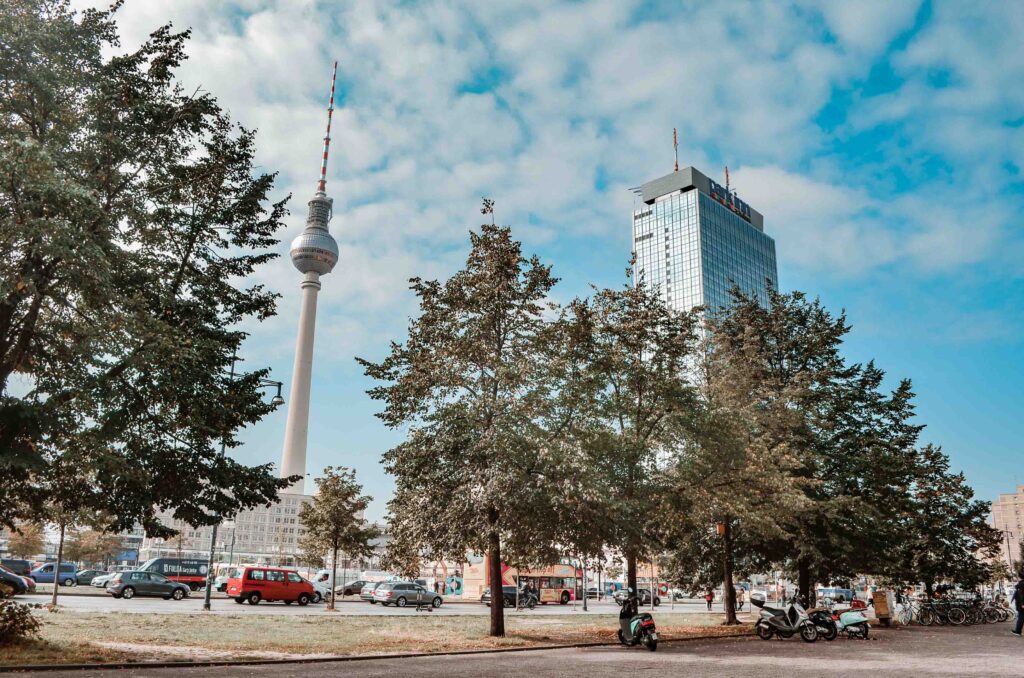
Berlin, Germany
Berlin is the vibrant heart of Germany. The city’s rich history is overwhelmingly visible as you walk through the streets where you can see remnants of the Berlin Wall and witness the iconic Brandenburg Gate. This city is one of the greatest examples of the resilience and transformation of a nation.
Berlin’s cultural landscape is as diverse as its inhabitants. It boasts a world-class arts scene, with renowned museums like the Pergamon Museum and the Gemäldegalerie, while contemporary galleries and street art contribute to its avant-garde spirit. The nightlife here is legendary, offering an eclectic mix of techno clubs, jazz bars, and trendy lounges that keep the city alive until dawn.
But Berlin is more than just a party hub. It’s a hub of innovation, with a growing tech and startup scene. Its green spaces, like Tiergarten and Treptower Park, provide serene escapes, while the city’s culinary scene reflects global influences. Berlin also has a great number of vegan restaurants in the city and is my favorite city in the world to eat out.
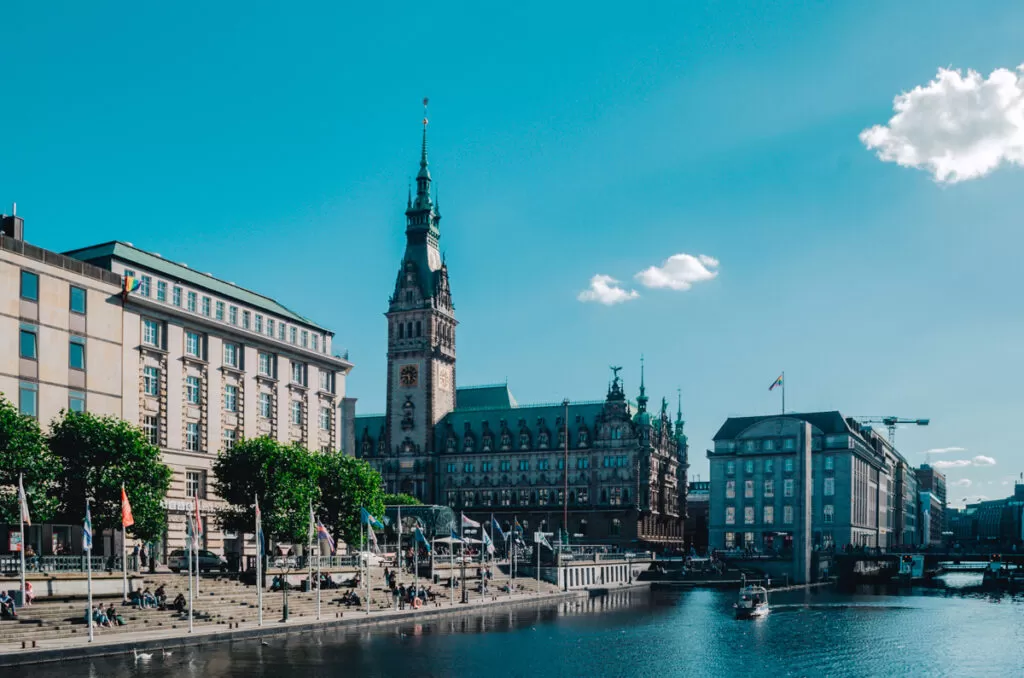
Hamburg, Germany
Hamburg is Germany’s second-largest city and is known for its large port and maritime heritage. Located along the Elbe River, this Hanseatic city has a very open feel, mainly due to the river location in combination with Alster Lake, a gigantic body of water in the middle of the city.
Hamburg’s maritime heritage is ingrained in its DNA, evident in the bustling port, the Speicherstadt (warehouse district), and the iconic Landungsbrücken (landing piers). The city’s numerous canals and bridges have earned it the nickname “Venice of the North.” Strolling along the Elbphilharmonie Plaza, a modern architectural masterpiece, offers panoramic views of the city and the harbor.
Culture thrives in Hamburg, with world-class theaters, including the renowned Elbphilharmonie concert hall, and a vibrant music scene that gave rise to The Beatles. The historic St. Michael’s Church, or “Michel,” with its stunning baroque interior is also worth a visit in Hamburg, where you can climb the 453 steps to the tower, offering a panoramic view over the city.
Furthermore, Hamburg boasts diverse neighborhoods, bustling markets, and a culinary scene, featuring local German dishes and international cuisine.
Now that you already have a bit of information about both cities, it’s time to explore them more in-depth. In the next sections, we’ll go into the specifics of each city regarding various aspects like culture, shopping, food scene, safety, and accessibility.
Culture encompasses the collective beliefs, customs, art, traditions, and way of life that define a community or society. It is the soul of a city, reflecting its history, values, and the character of its inhabitants. In comparing the cultures of Berlin vs Hamburg, we explore how these two iconic German cities express their distinct identities and contribute to the nation’s cultural fabric.

East side Gallery, Berlin
Berlin’s culture is a fascinating amalgamation of history, innovation, and artistic freedom. It reverberates with echoes of its tumultuous past, from the remnants of the Berlin Wall to iconic landmarks like the Reichstag and the Brandenburg Gate.
The city’s avant-garde spirit finds expression in its world-class art galleries, vibrant street art scene, and a nightlife that never sleeps. It’s a hub for creativity and self-expression and you can feel inspiration bubbling up when you walk through the streets of East Berlin.
Berlin is a dynamic city and also boasts a great green start-up scene with green initiatives at every street corner.
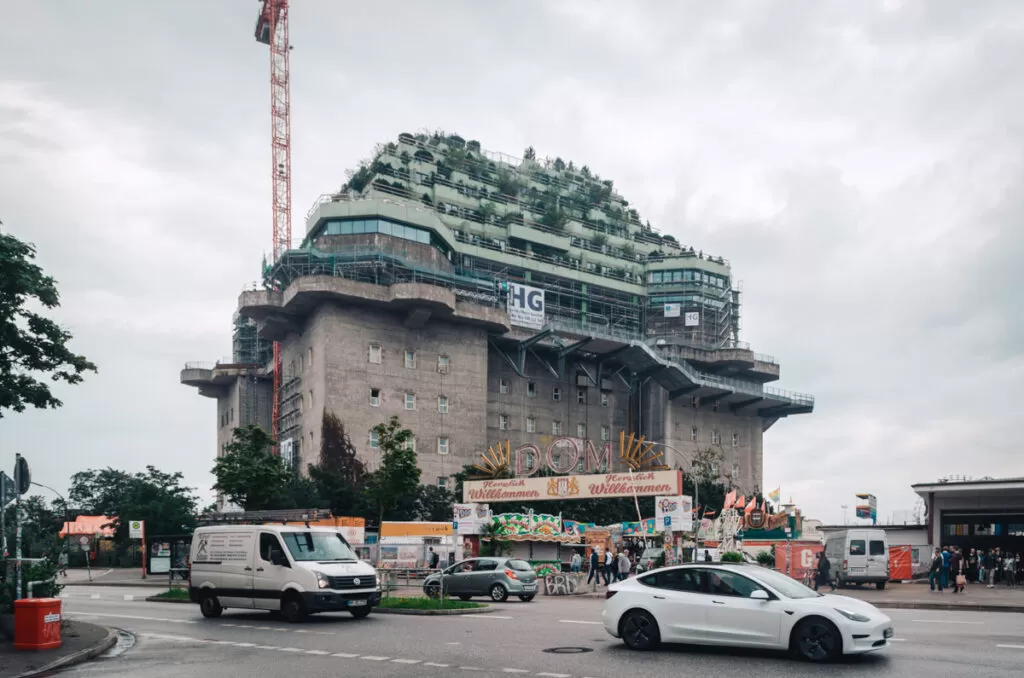
WW II bunker in the Karolinenviertel in Hamburg
Hamburg’s culture is deeply rooted in its maritime heritage and Hanseatic traditions. The bustling port, historic warehouse district, and scenic canals evoke its seafaring past.
The city boasts a thriving music scene, from classical concerts at the Elbphilharmonie to its historical ties with The Beatles. It is also influenced by Scandinavian architecture and culture due to its location way up north in Germany.
As an important trade city, you can feel the role water plays in the lives of the local inhabitants. Not only can you explore the Elbe and the canals on tourist excursions but boat transport is even integrated into the city’s public transport system, making it wonderful to get around.
The food scene encompasses a city’s culinary landscape, reflecting its gastronomic diversity, dining culture, and the flavors that define it. It encapsulates the range of dining options, from street food stalls to fine dining establishments, and showcases the local and international cuisines that a city offers.
Comparing the food scenes of Hamburg vs Berlin I found them to be quite similar, although you can find fewer vegan restaurants in Hamburg.

Vegan Mandu Kimchi @ Feel Seoul Good
Berlin’s food scene is a vibrant reflection of its multicultural population and creative spirit. It’s a melting pot of flavors, offering everything from traditional German dishes to international cuisine from around the world.
The city’s street food markets, like Markthalle Neun, are a paradise for food enthusiasts, while its Michelin-starred restaurants, such as Tim Raue, elevate fine dining experiences.
Berlin’s food trucks, trendy brunch spots, and emphasis on vegan and organic options highlight its culinary dynamism and openness to experimentation. You can truly find a vegan version of everything in Berlin, from donuts at Brammibal’s to vegan currywurst at Curry 61.
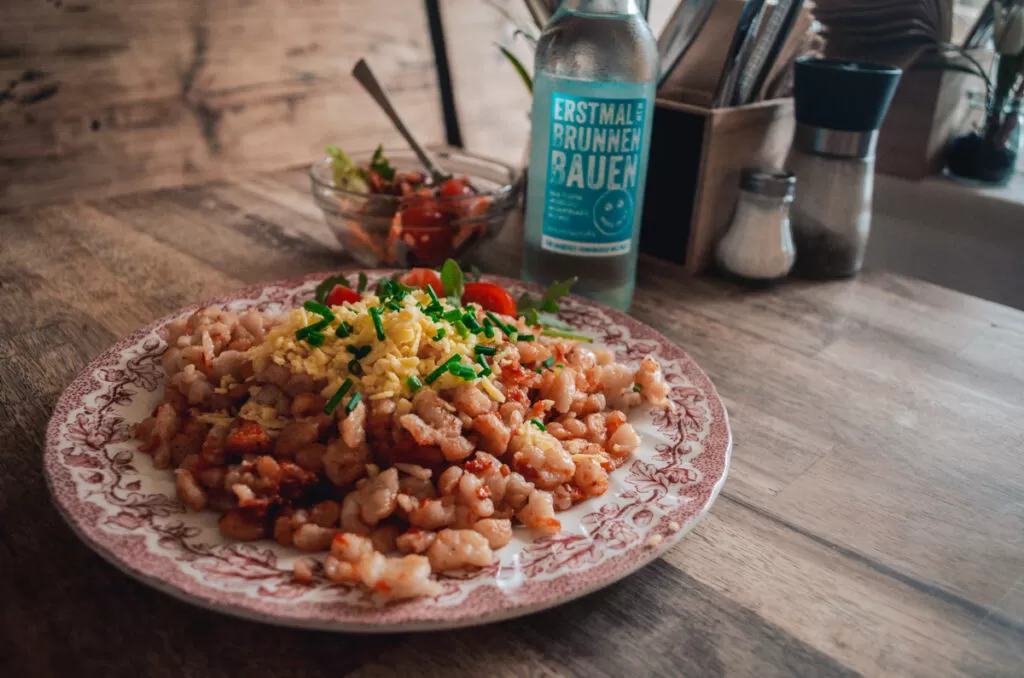
Vegan red pesto Spätzle @ Zum Spätzle
Hamburg’s food scene is deeply influenced by its maritime location along the Elbe River and the North Sea. Seafood takes center stage, with fresh fish, herring, and Labskaus being local specialties. The historic Fischmarkt and the St. Pauli Fish Market offer an authentic taste of the city’s seafaring heritage.
Beyond seafood, Hamburg’s culinary landscape includes hearty northern German fare, upscale waterfront dining, and a thriving coffee culture. Luckily for us, vegan and conscious travelers, it also boasts a great vegan scene.
While there are as many vegan restaurants in Hamburg as in Berlin, you can find a nice selection though, with Good One Café, Bodhi Vegan Living, and Aendre being my favorites.
Safety in a city refers to the degree of security and well-being experienced by its residents and visitors. It encompasses various aspects, including low crime rates, effective law enforcement, accessible healthcare, and a sense of personal security.
Berlin is generally considered a safe city. It benefits from low crime rates compared to many other European capitals. Effective policing and a strong emphasis on public safety contribute to a sense of security among residents and tourists.
While some areas may have occasional incidents, overall, Berlin offers a safe environment for those exploring its vibrant neighborhoods, cultural sites, and nightlife.
Hamburg also ranks as a safe city, with a well-regarded police force and comprehensive safety measures in place. The city’s maritime traditions and a strong sense of community contribute to its reputation as a secure destination.
As a traveler, you can enjoy its historic districts, waterfront areas, and cultural attractions with confidence. Hamburg’s commitment to safety ensures that residents and tourists can experience the city’s charm and diversity without significant safety concerns.
Accessibility for travelers encompasses the ease with which visitors can navigate and explore a city. It involves various factors such as transportation options, infrastructure, language accessibility, and tourist-friendly amenities.
A city that prioritizes accessibility ensures that travelers, regardless of their background or needs, can comfortably and conveniently experience its attractions, culture, and services.
Both cities have an airport but can also be reached easily overland from various locations in Europe by train or Flixbus. Another good site to compare transport options is Omio.
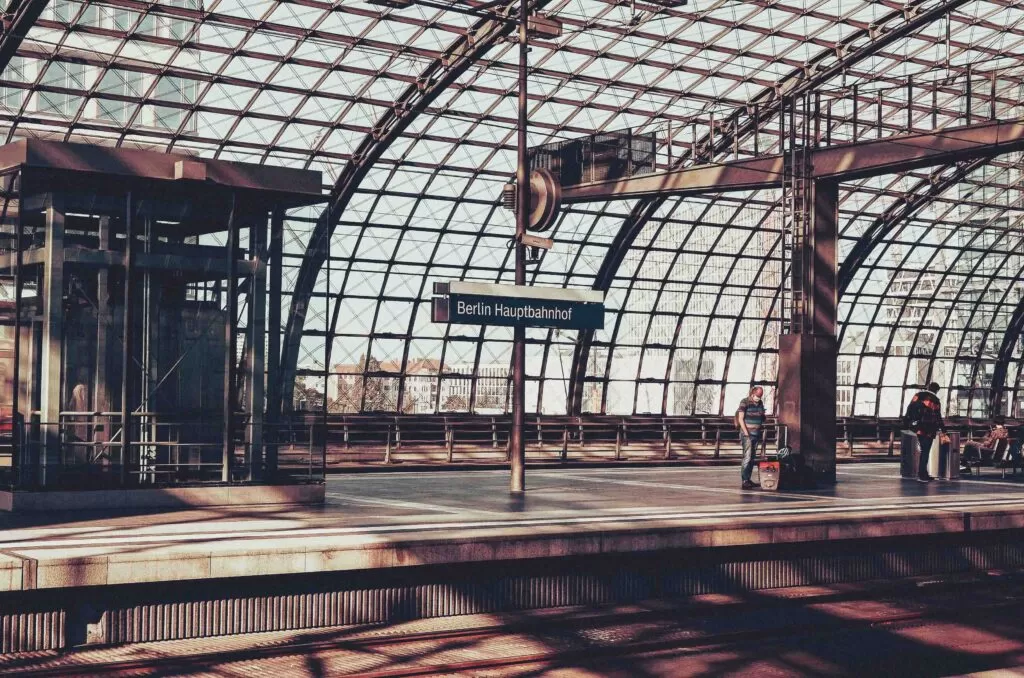
Berlin is known for its traveler-friendly environment. The city boasts a well-connected public transportation system comprising buses, trams, U-Bahn, S-Bahn, and a reliable network of bike lanes. Multilingual signage and English-speaking staff at major tourist sites enhance accessibility for non-German speakers.
Additionally, Berlin accommodates diverse dietary preferences, offers barrier-free access to many attractions, and provides a wide range of accommodations to suit various budgets, ensuring that travelers of all backgrounds can comfortably explore the city.
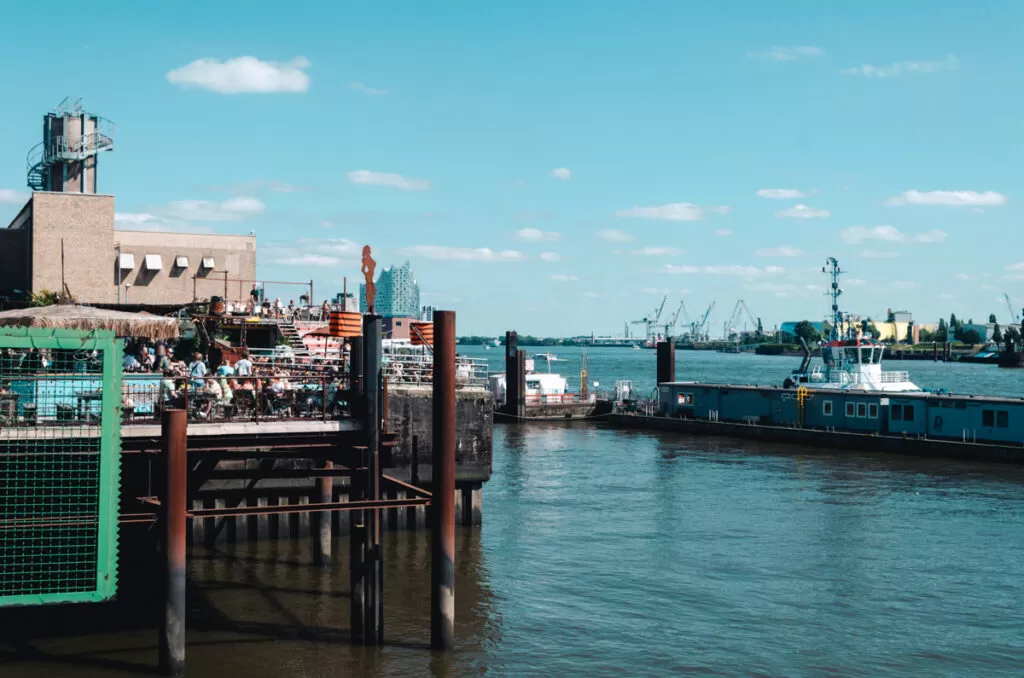
Hamburg also prioritizes accessibility for travelers. Its extensive public transportation system, including buses, trains, and ferries, simplifies getting around the city.
As a tourist, you will find helpful multilingual support at key locations and attractions. The city’s well-maintained sidewalks and accessible infrastructure make it also an easy-to-navigate destination for travelers with mobility challenges.
Hamburg’s inclusive approach to tourism extends to its accommodation options and culinary scene, offering a welcoming environment for all travelers to immerse themselves in the city’s maritime heritage and vibrant culture.
Determining the best time to visit a city involves considering various factors, including weather, events, and personal preferences. The ideal time to explore a city ensures that you can fully enjoy its attractions, activities, and ambiance.
When comparing the best times to visit Hamburg vs Berlin, I take into account the distinct seasonal characteristics and events that make each city more appealing during certain periods.
Berlin experiences distinct seasons, each offering a unique charm. Spring (April to June) and early autumn (September to October) are often considered the best times to visit. During these periods, the weather is generally mild, and outdoor attractions like parks and gardens come to life. Moreover, you can enjoy various cultural festivals and events.
Summer (June to August) is vibrant with open-air concerts and outdoor dining, but it can be crowded. Winter (December to February) is ideal for those seeking a festive atmosphere and holiday markets.
Hamburg’s maritime climate influences the best time to visit. Summer (June to August) is the most popular season, offering pleasant weather for exploring the city’s waterfront areas and parks. This is when outdoor events, festivals, and harbor tours flourish.
Spring (April to May) and early autumn (September to October) provide milder temperatures and fewer crowds, making it an excellent time for a more relaxed visit.
While winters (December to February) are chilly, the city’s festive atmosphere during the holiday season, including its Christmas markets, can be magical for travelers seeking a cozy and charming experience.
It’s hard to delve deep into all the attractions and sights of each city in this section but I will try to highlight what distinguishes these cities from other capital cities in Europe.
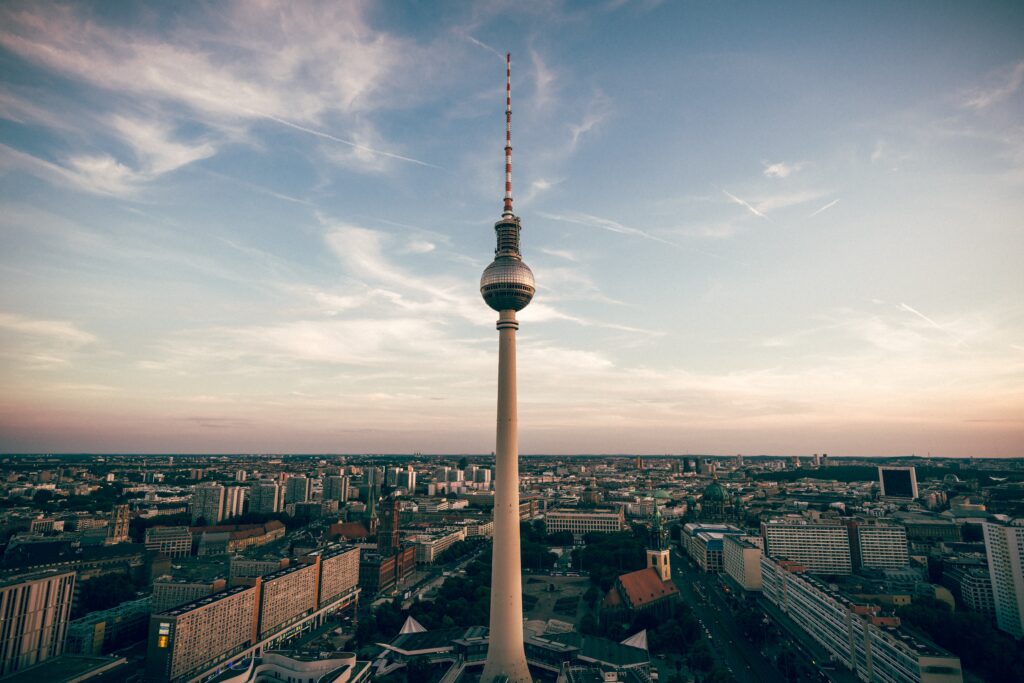
There are many must-do experiences in Berlin and a lot of them involve exploring the rich past of the city. Historical Sites you shouldn’t miss are the Brandenburg Gate and Berlin Wall Memorial while Checkpoint Charlie is not that thrilling but still important due to its historic significance.
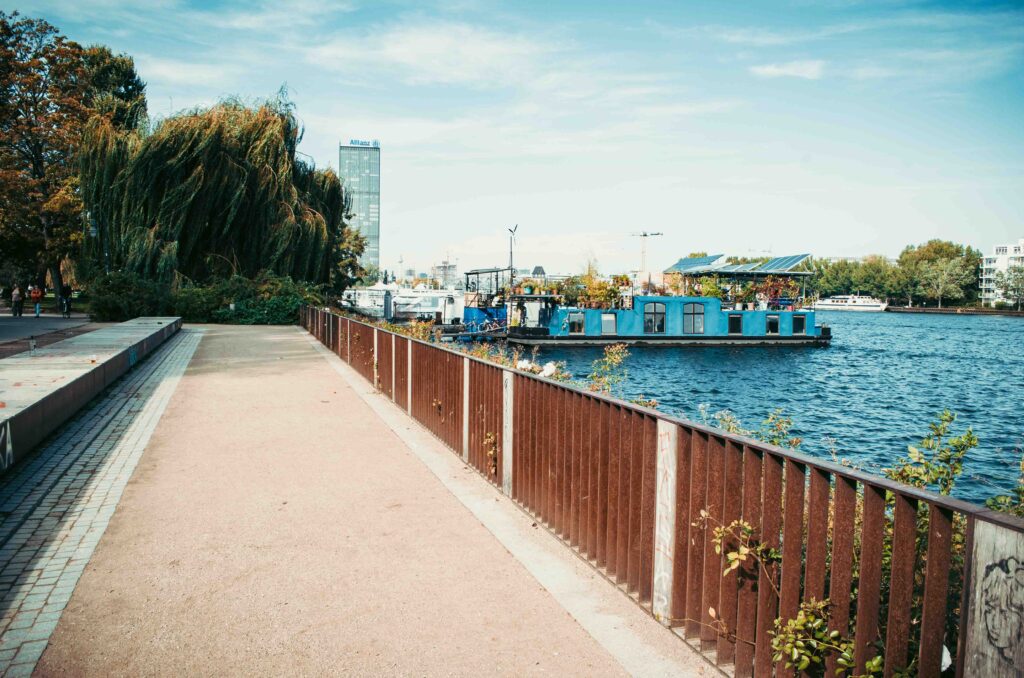
While there isn’t as much water in the capital city as in Hamburg, one thing you can find plenty of is beautiful parks in Berlin. Treptower Park is a great park to hang out near the River Spree while Tempelhofer Feld is an old airfield turned into a park.
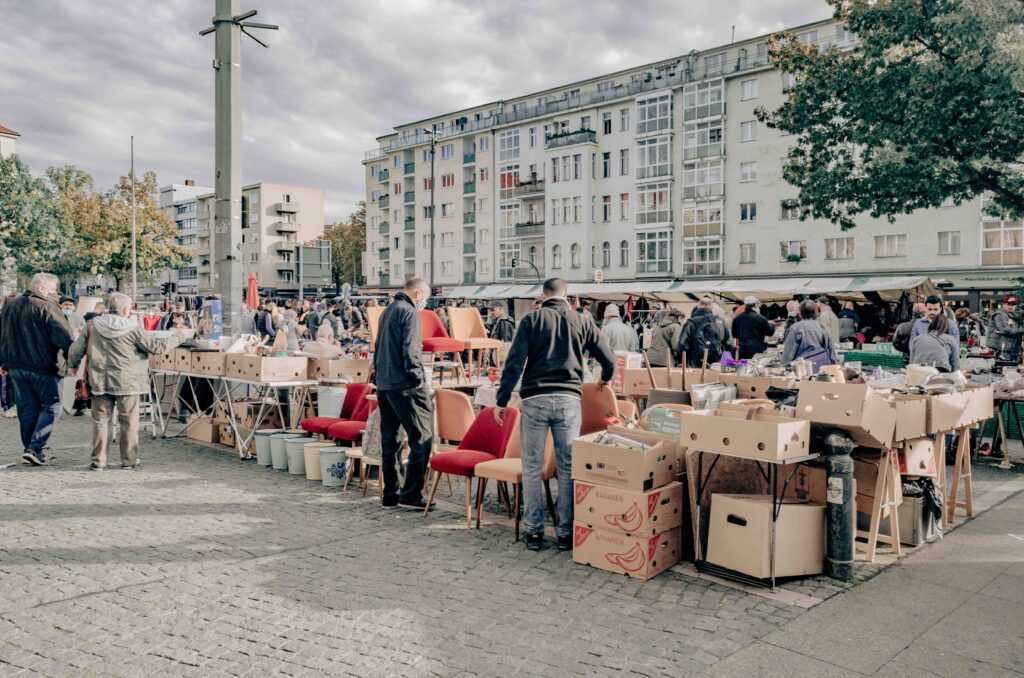
Berlin is also a shopping paradise and a lot of the stores you can find in Berlin are pretty sustainably-minded. In Berlin, you can find a large array of sustainable fashion stores, vintage and second-hand shops, and, every weekend, you can find numerous flea markets throughout the city that really sell everything, from books to clothing and bicycles to guitars.
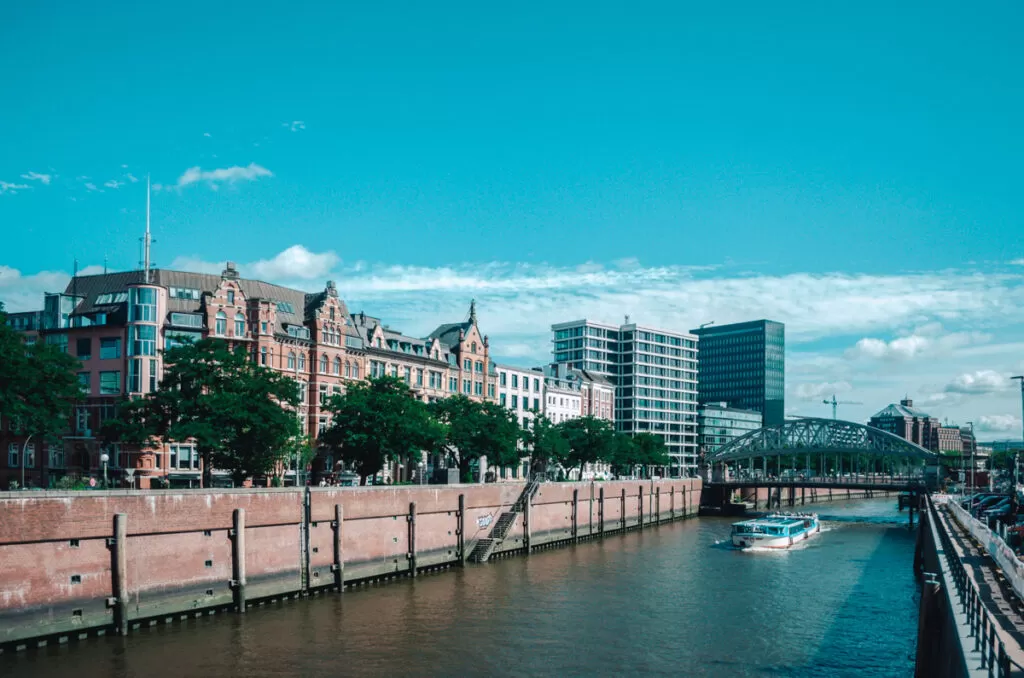
With a maritime heritage so present in the city, a must-do in Hamburg is definitely to take a cruise along the Elbe River to explore the rich history of the city. Near the boat docks is also a great place to hang out after your boat trip, called Strand Pauli.

The city also boasts some other beautiful locations like the Alster Lake, where you can enjoy a coffee while looking at small sailing boats across the lake, and Planten un Blomen, a fantastic park where you can find a botanical garden, a Japanese tea house and a pharmacist’s garden with medicinal herbs and plants.
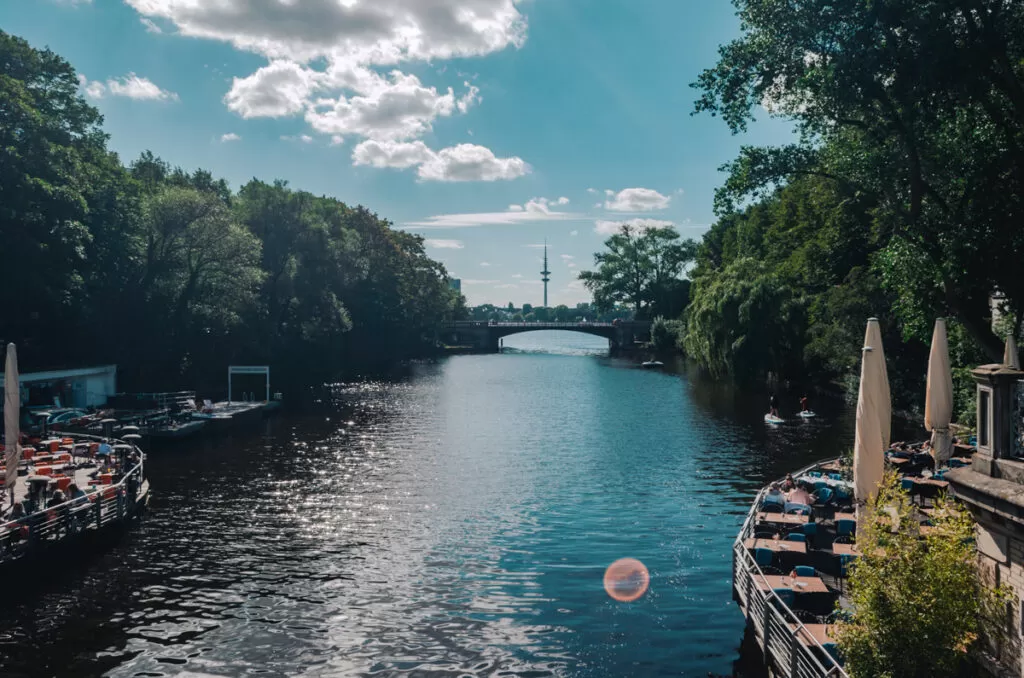
The Elbephilharmonie and Speicherstadt are definitely worth visiting for it’s beautiful architecture and you can also find a bunker from WW II in the Karolinenviertel. Shopping in Hamburg is the best around Sternschanze where you can find a large array of local designer stores and second hand shops.
There is a broad range of lodging options available to travelers in a city, catering to diverse preferences, budgets, and needs. It encompasses hotels, hostels, vacation rentals, boutique inns, and other places where you, as a traveler, can stay during your trip.
A city’s accommodation landscape significantly influences the overall travel experience, and it’s important to choose one that gives a sense of a home away from home.
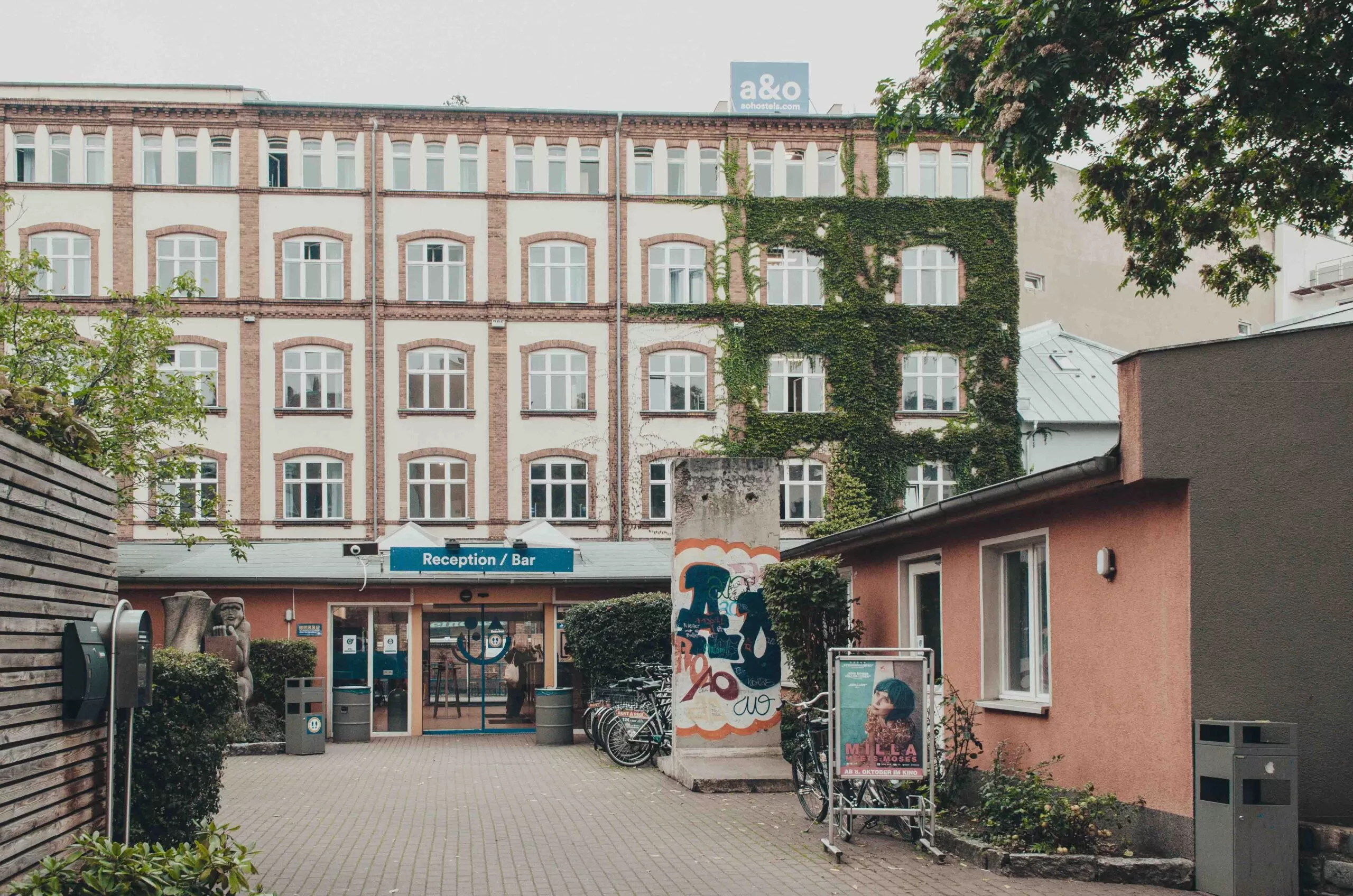
Berlin offers a plethora of accommodation choices to suit every traveler. It is renowned for its diverse range of options, from luxury hotels like the Hotel Adlon Kempinski and boutique establishments like Das Stue, to budget-friendly hostels like A&O and trendy Airbnb rentals.
The city’s neighborhoods provide distinct atmospheres, so it is important to select accommodation that aligns with your interests. Friedrichshain and Neukolln will please more alternative travelers, while Charlottenburg is better for travelers who like a clean environment and a bit of luxury.
For green hotels, check out my curated list of Eco hotels in Berlin.
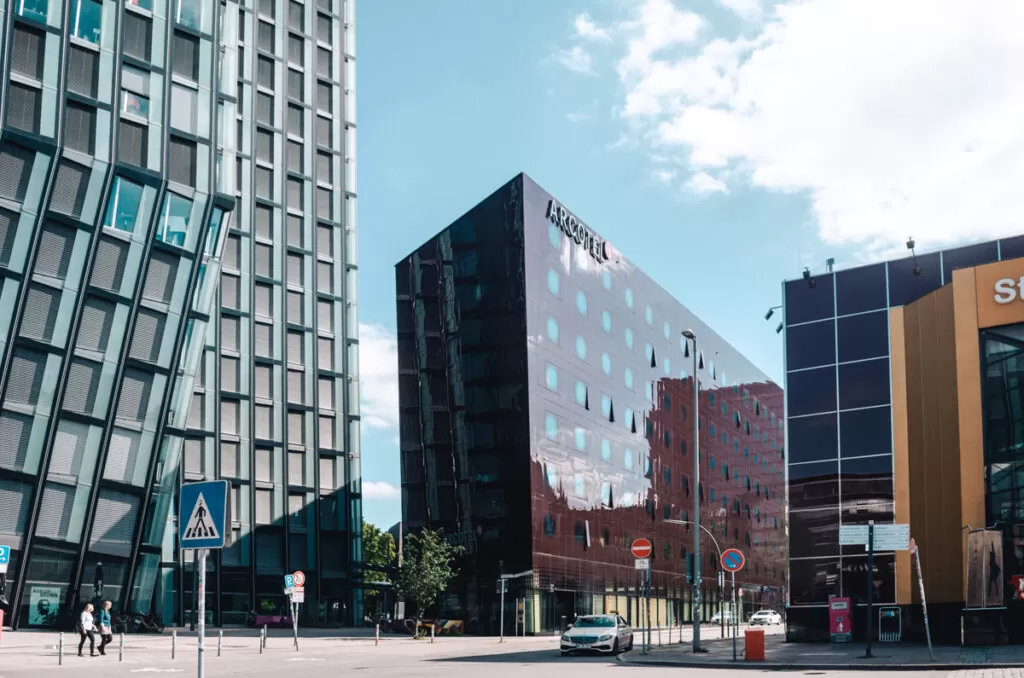
Hamburg also provides a wide array of accommodation options that embrace the city’s maritime and cosmopolitan character. The city offers luxury stays at waterfront hotels like The Fontenay and historic lodgings in St. Pauli like Hotel Hafen.
Budget travelers can find comfort in stylish hostels and guesthouses with Pyama Park and Schanzenstern Altona being great options. If you are a vegan traveler, also check out my guide to the best hotels in Hamburg that cater to vegan travelers.
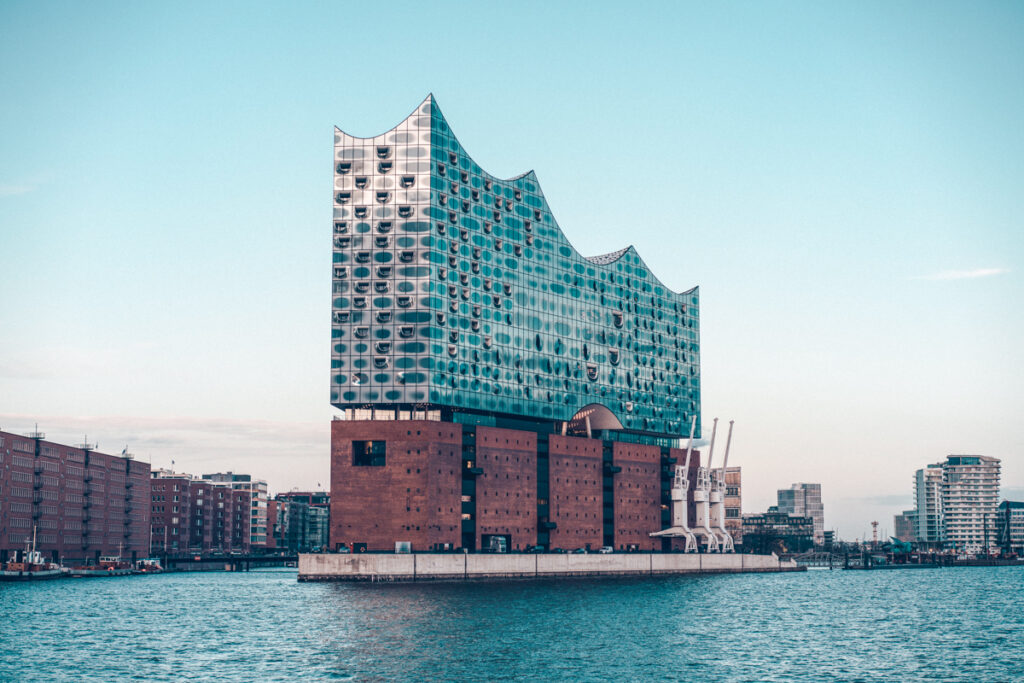
Elbephilharmonie, Hamburg
Berlin is generally considered more affordable than many other European capitals, making it an attractive destination for budget-conscious travelers. Accommodation costs, while rising, are still relatively reasonable compared to other major cities. Dining out at restaurants and cafes can be affordable, especially when enjoying street food and local specialties.
Public transportation is reasonably priced, and there are plenty of free or low-cost attractions, including museums and parks. Berlin’s affordability extends to its vibrant nightlife, where you can find reasonably priced drinks and entertainment options.
Hamburg, while not as inexpensive as Berlin, still offers good value for travelers. Accommodation prices can vary, with some areas, such as St. Pauli and the city center, being more expensive than others. Dining out can be affordable, especially when sampling seafood at the local Fischmarkt or enjoying a meal in the city’s less touristy neighborhoods.
Public transportation costs are reasonable, and there are plenty of free and low-cost cultural experiences, like visiting the city’s historic districts. Hamburg strikes a balance between offering quality experiences and value for money, making it an accessible destination for travelers with varying budgets.
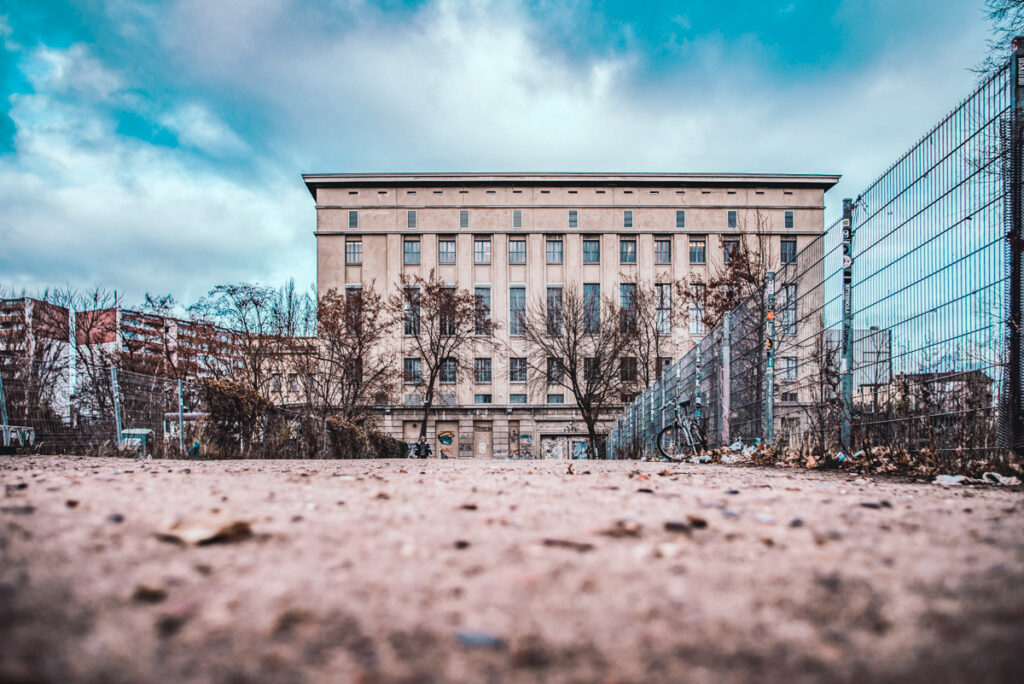
Berghain Night Club in Berlin
While I am completely past the phase of going out until the morning and prefer tea and chocolate before going to bed instead of beer and greasy food, here is a comparison of the nightlife in Berlin vs. Hamburg.
Berlin is renowned for its legendary nightlife, offering a diverse and thriving scene that caters to all tastes. The city’s reputation as a techno music capital is exemplified in clubs like Berghain and Watergate.
Its neighborhoods, including Kreuzberg and Friedrichshain, come alive with countless bars and clubs, making it easy to find a spot for dancing or enjoying live music until the early hours.
Berlin’s 24/7 culture means that nightlife options are available every night of the week, making it a global nightlife destination.
Hamburg’s nightlife is equally vibrant, with a unique character influenced by its maritime heritage. The St. Pauli district, home to the famous Reeperbahn, offers a mix of theaters, clubs, and bars.
Live music venues showcase local and international talent, while the city’s traditional beer halls and waterfront bars provide a more relaxed atmosphere.
Hamburg’s nightlife scene caters to various preferences, from partygoers to those seeking a cozy night out. The city’s cultural events, festivals, and special nighttime tours also contribute to its dynamic nightlife offerings, ensuring there’s something for everyone to enjoy after dark.
A neighborhood is a distinct geographic area within a city or town, characterized by its unique culture, atmosphere, and community. Each neighborhood often has its own identity, history, and attractions, making it an essential element in understanding a city’s diversity and character and is especially important when picking accommodation.
Here are the most important areas and neighborhoods in Hamburg vs Berlin that cater to regular and slightly more alternative travelers.

Regular travelers will feel most at home in Berlin’s Mitte, the central district that features iconic landmarks like the Brandenburg Gate and Museum Island. Prenzlauer Berg on the other hand is also a good option, providing a family-friendly atmosphere with parks and cafes.
Alternative travelers can explore Kreuzberg and Friedrichshain, known for their edgy, artistic scenes, street art, and eclectic nightlife. Travelers seeking unconventional experiences can delve into Berlin’s Neukölln and Wedding neighborhoods.
Neukölln is a multicultural hub with an exciting art scene and offbeat cafes, while Wedding retains a gritty charm with its affordable bars and creative spaces. These areas offer a glimpse into Berlin’s underground culture and are less frequented by mainstream tourists.
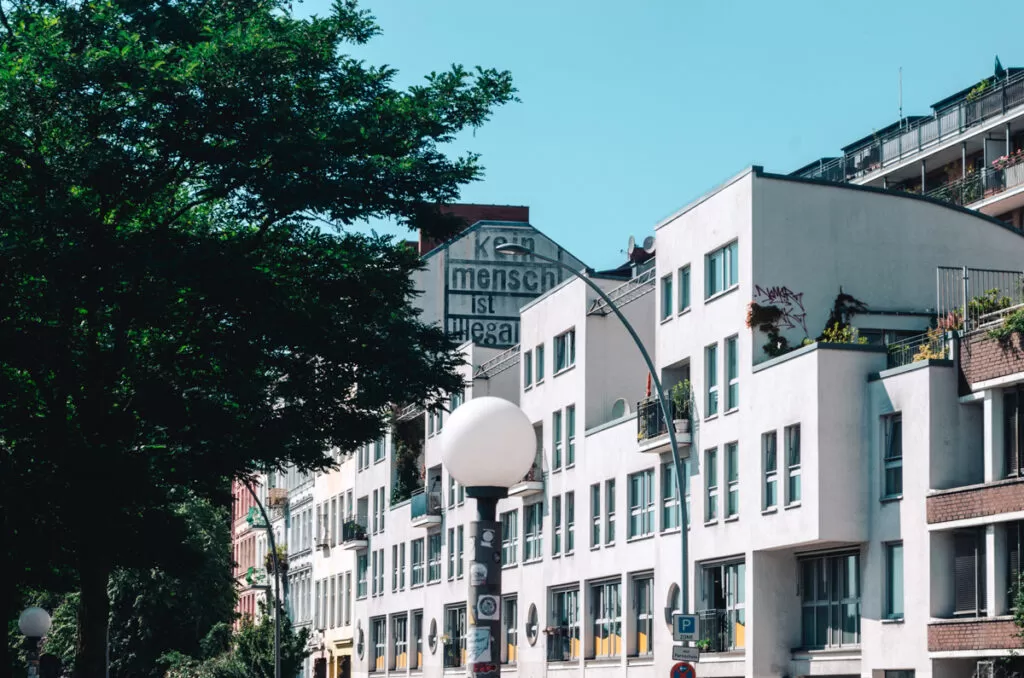
Hamburg’s neighborhoods provide options for both regular and alternative travelers. Altstadt (Old Town) is perfect for regular travelers, offering historic charm, shopping, and upscale dining. St. Pauli, known for its nightlife and entertainment, appeals to those seeking a lively atmosphere.
Alternative travelers can explore Sternschanze, with its indie boutiques and street art, or Altona, which combines a historic district with a creative vibe.
Alternative travelers can venture even further out to neighborhoods like Ottensen, where you can discover hidden courtyards, vintage shops, and a bohemian spirit. Schanzenviertel, adjacent to Sternschanze, offers even more alternative experiences with its alternative music venues and offbeat bars.
These areas are well-suited for travelers looking to immerse themselves in Hamburg’s alternative and counterculture scenes and are looking for a more local vibe away from the tourist trail.
Deciding whether Hamburg or Berlin is better to visit depends on your preferences and interests as a traveler. Both cities offer unique experiences, so here are some factors to consider:
Visit Berlin If:
Visit Hamburg If:
Ultimately, the choice between Hamburg and Berlin depends on your personal interests. Both cities have their own distinct appeal, so consider what aspects of each destination align with your travel preferences to make the best decision for your visit.
There you go! I hope you enjoyed this post about Hamburg vs Berlin. Let me know in the comments below if you have any questions or drop me a message through my contact page.
Also, don’t forget to check out my resources page with my favorite booking platforms and tips to start planning your trip. Additionally, have a look at my favorite travel gear if you want to pack more consciously!
ENJOY!
Disclaimer: This post may include affiliate links. If you click on them, I may receive a commission at no extra cost to you.
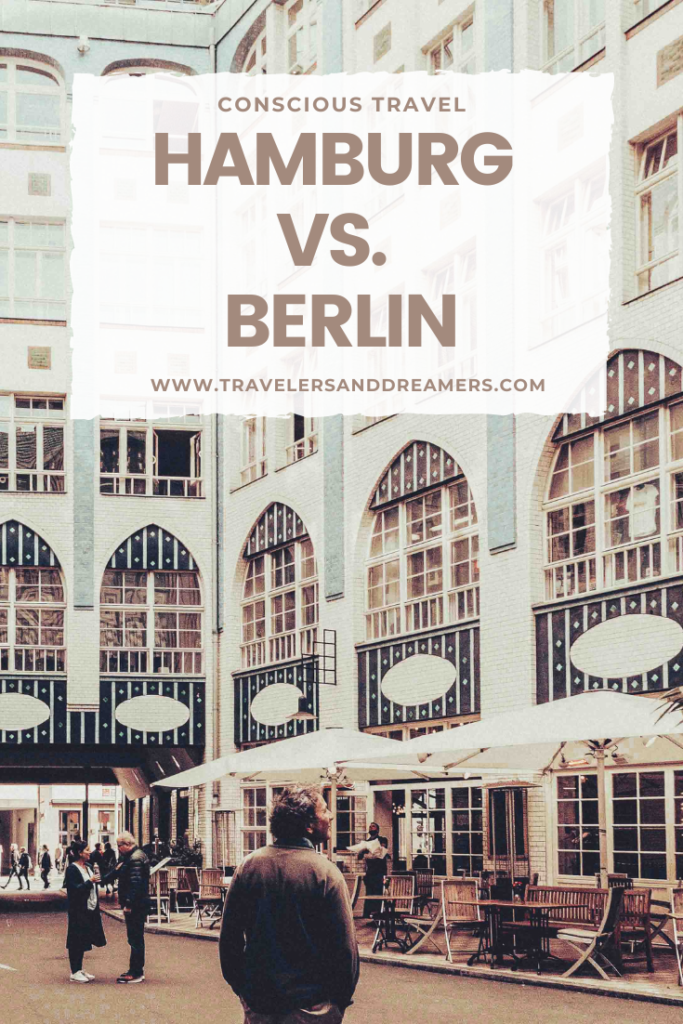
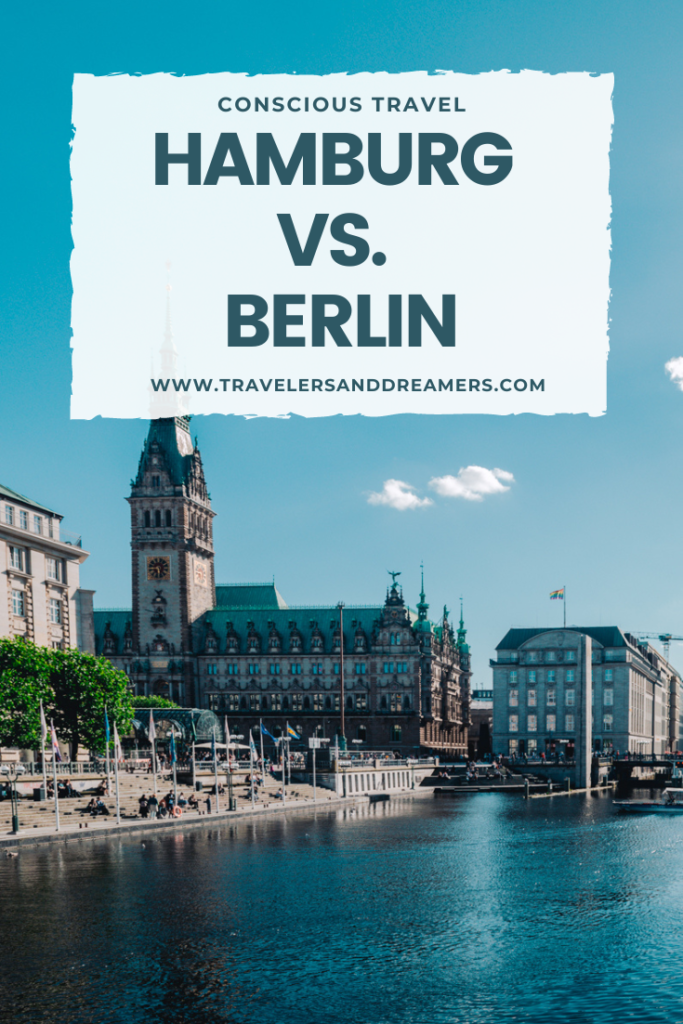

Hi! I am Annelies and this is Travelers & Dreamers, a blog about conscious travel which means traveling in a more mindful way, with a positive impact on the world and yourself!
On this website, I cover different topics like slow travel, plant-based food guides, responsible travel, sustainable packing, eco-travel, and more!
Latest Posts



15 Best Things to Do in Nong Khiaw, Laos (2024)

Santa Rita, Salento: All You Need to Know
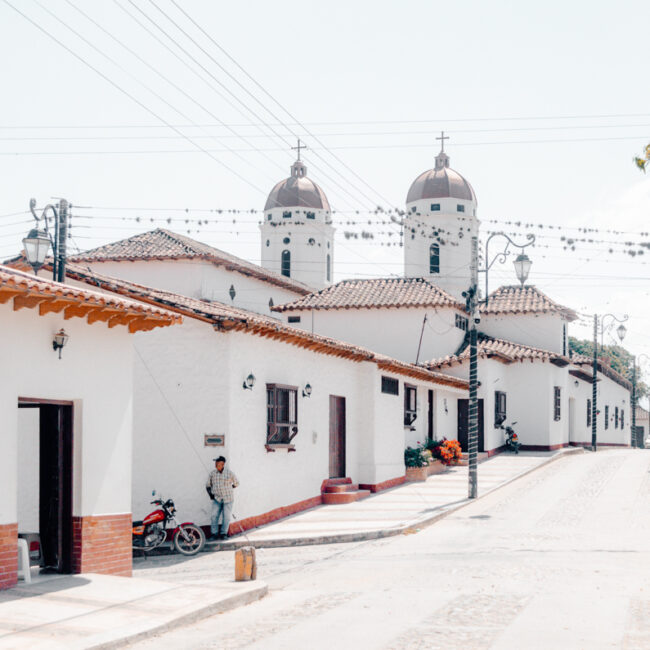
La Playa de Belen, Colombia: An Easy Travel guide!
Do you want to receive my latest finds on conscious and sustainable travel directly to your inbox? Subscribe here!
© COPYRIGHT TRAVELERS&DREAMERS, 2023.